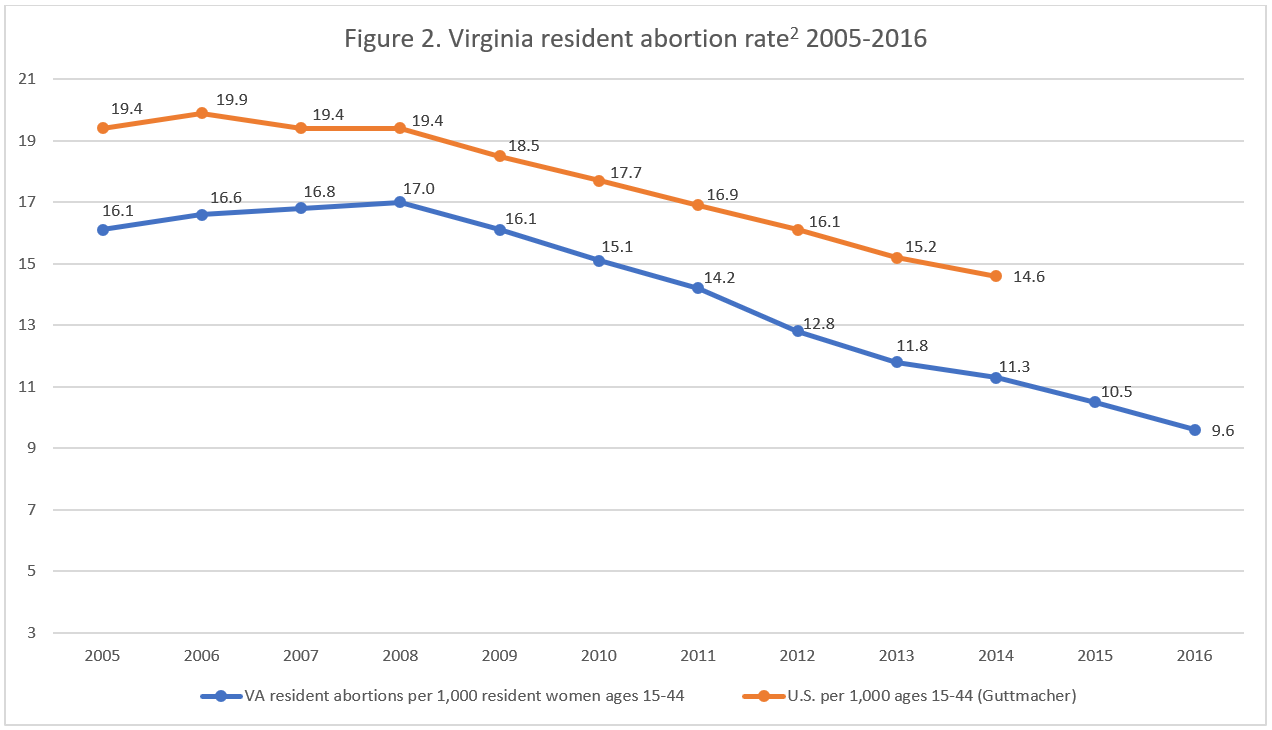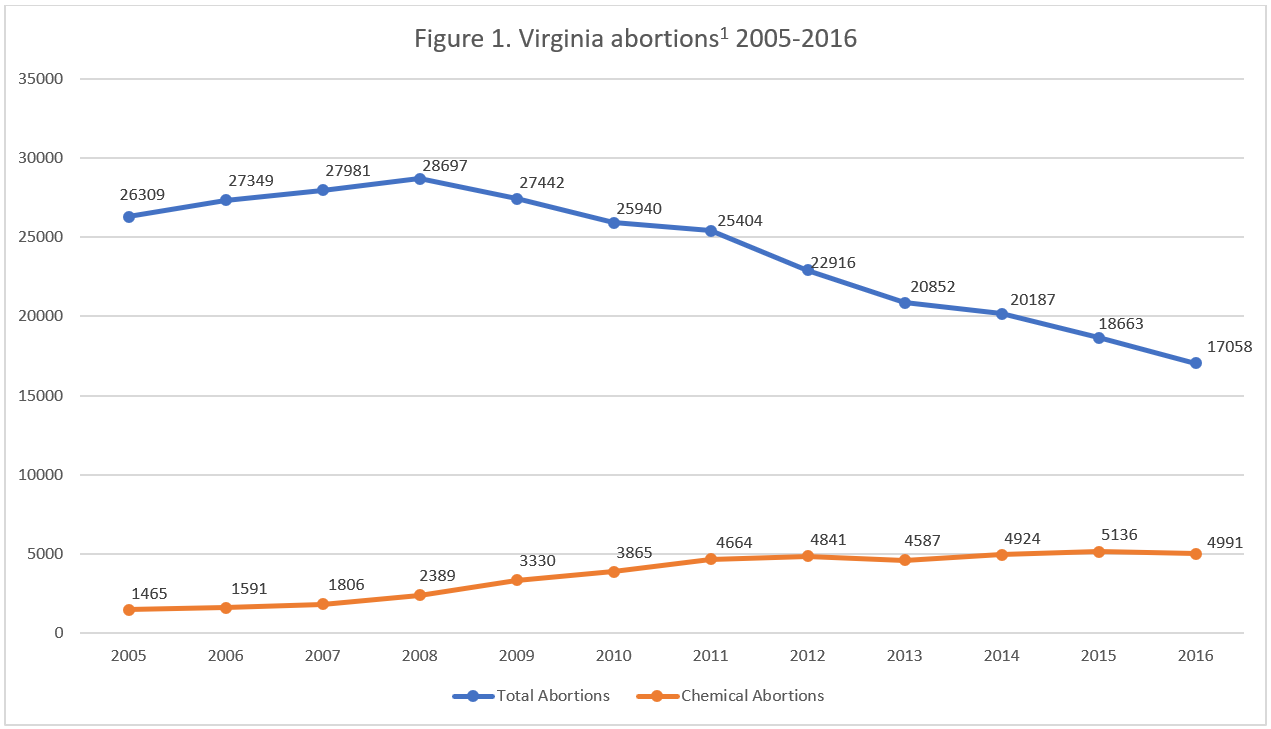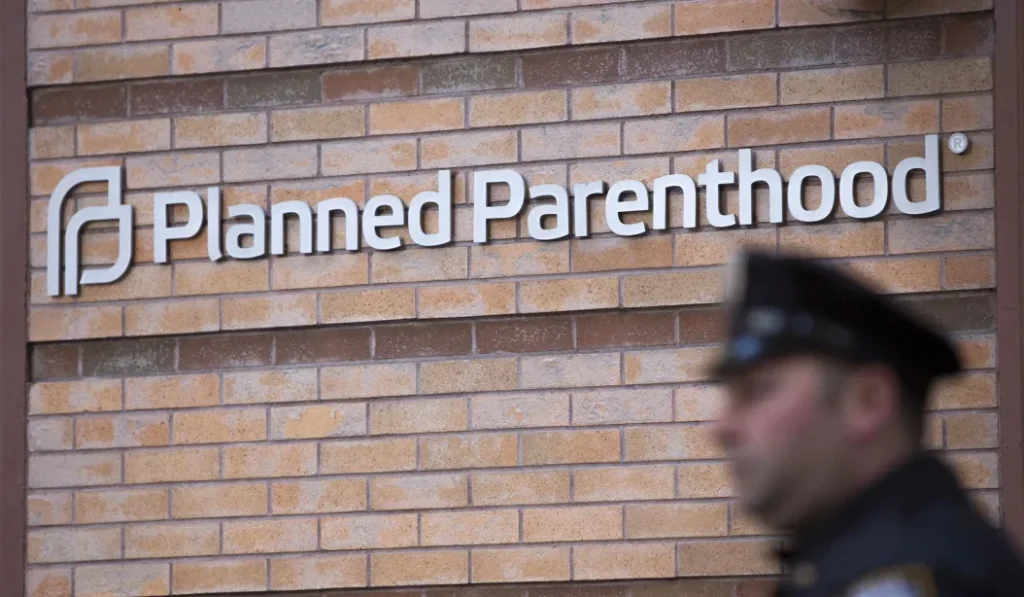Abortion Reporting: Virginia (2016)

Virginia’s health statistics report for 2016 was published on the website of the Virginia Department of Health in March 2019. Health statistics tables for 2014 and 2015 were made available to the Charlotte Lozier Institute upon request.
Statistics and Changes in Virginia Abortions, 2015-2016

Abortion Totals and Trends
In 2016, there were 17,058 abortions reported in Virginia, a drop of nine percent from the 18,663 reported the previous year. Since 2005, Virginia abortions have fallen by 35 percent. There were 4,991 chemical abortions reported in Virginia in 2016, an increase of 240 percent since 2005 but a decline of three percent from 2015 (Fig. 1). Chemical abortions made up 29 percent of all abortions reported in Virginia in 2016. Virginia’s resident abortion rate in 2016 was 9.6 resident abortions per 1,000 women of childbearing age, down from 10.5 the year before (Fig. 2).
State Report Summary
In 2016, 94 percent of the abortions reported in Virginia were performed on state residents. More than two thirds of the reported abortions – 68 percent – were performed using suction curettage, while 29 percent were chemical abortions. Not quite three percent were performed using dilation and evacuation, also known as dismemberment abortion. Forty-six abortions were performed via sharp curettage, and 13 abortions were performed using other, unspecified abortion methods. Virginia reported no abortions performed by means of intrauterine instillation or hysterectomy or hysterotomy.
Apart from the type of procedure used, almost all of the information in the annual health statistics report is for resident abortions only. As in other states, over half the abortions (57 percent) were performed on women in their twenties. Thirty percent were performed on women in their thirties and four percent on women age 40 or older. Eight percent of the abortions were performed on women under the age of 20, and the youngest girl to undergo an abortion was 12 years old.
White women underwent 44 percent of the abortions, and another 44 percent were performed on black women. Twelve percent were performed on women of Asian or Pacific Islander descent and just 0.2 percent on Native American women. Virginia reports that the abortion rate among white women in 2016 was 6.2 abortions per 1,000 white women ages 15-44 – a third of the abortion rate among black women, which was 18.6 abortions per 1,000 women of childbearing age. Eighty-six percent of the abortions were performed on unmarried women. The report does not state how many abortions were performed on married women and women of unknown marital status.
A third of the abortions performed on Virginia residents occurred earlier than 6 weeks of gestation. Twenty-six percent were performed between six and seven weeks and 14 percent between eight and nine weeks. Seven percent occurred between 10 and 11 weeks, and two percent were between 12 and 13 weeks of gestation. Another two percent were performed between 14 and 19 weeks. One and a half percent were performed at 20 weeks of gestation or later, when babies can feel pain. Fourteen percent were performed at unknown gestational ages. Virginia prohibits abortion in the third trimester unless a woman’s life or health is in danger. The month of February had the highest reported number of resident abortions (1,645), while November had the fewest (1,005).
The annual health statistics report includes the type of facility for all Virginia abortions, not just those performed on residents. In 2016, not quite three percent of the abortions reported in Virginia were performed in hospitals, and 97 percent were performed in clinics and doctors’ offices. Virginia’s health statistics report does not identify the facilities where abortions are performed. However, Virginia publishes a separate report with information on all abortions performed in the state and each facility where abortions occurred. Planned Parenthood’s Virginia Beach center reported 2,878 abortions in 2016, more than any other abortion center in Virginia. Planned Parenthood’s four Virginia abortion centers together accounted for 38 percent of the abortions reported in Virginia, a slight drop from 39 percent in 2015. However, in 2018, a fifth Planned Parenthood center began performing abortions, which could cause an increase in Planned Parenthood’s market share in later reports. In 2016, 20 facilities reported abortions in Virginia; 11 of these reported 500 abortions or more.
Gestational Limits on Abortion
Currently, Virginia law limits abortion in the second and third trimester. Abortions in the second trimester must be performed in a hospital or outpatient surgical facility. After the second trimester, an abortion may only be performed once three physicians certify that the abortion is necessary to prevent “substantial and irremediable” harm to the woman’s physical or mental health.
In January, Virginia House Delegate Kathy Tran introduced a bill that would have revised the standards for third trimester abortions, allowing just one physician to certify that a third trimester abortion was necessary and striking the qualifier that the risk to the woman’s health must be “substantial and irremediable.” As Delegate Tran herself acknowledged, by permitting third trimester abortions for vague, undefined health reasons, the bill would effectively allow abortions in Virginia up to the moment of birth. Delegate Tran argued that late-term abortions must be permitted to protect women’s health but was unable to provide any examples of scenarios in which a third-trimester abortion would be necessary. The bill was defeated.
State Ranking
In 2016, Virginia was ranked at 29th place by CLI’s survey of abortion reporting across the nation. At the time of CLI’s survey, Virginia’s current vital statistics report was for 2013. Recently, Virginia has made strides to make its reporting more up-to-date, compiling and publishing the 2016 vital statistics report and releasing its abortion report and facilities report for 2017. The Department of Public Health informed CLI that the full 2014, 2015, and 2017 vital statistics reports are in progress. Virginia could further improve its reporting by including information on its informed consent process and whether women experience any complications from abortions.

- Totals may be revised in future reports.
- Rates were taken from Virginia’s annual abortion reports for 2005-2016. Virginia calculates the state abortion rate as the number of abortions performed in Virginia on Virginia residents per 1,000 Virginia resident women ages 15-44.


























